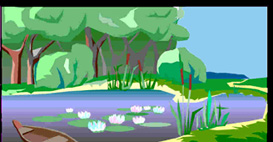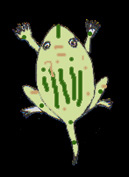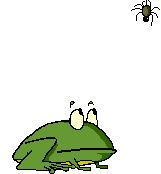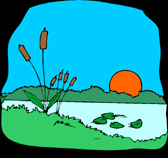
|
|
|
|
|
|
|
|
|
|
|
|
|
|
|
|
|
|

 |
|||
|
|
|||
|
|
|||
        
|
|||
 |
|
|
The frog has nostrils and eyes high up on its head. This means they stay out of the water while the frog is swimmimg. |
|
|
The frog has a sensitive area on its back. This can sense vibrations in the water. The frog has moist skin to allow oxygen to pass through. |
 |
The frog has a sticky tongue and a wide mouth, so it can catch insects. The frog has lungs for fast breathing. |
|
|
The frog has strong back legs for leaping and swimming.  The frog has webbed feet. These help it to swim quickly. |
|